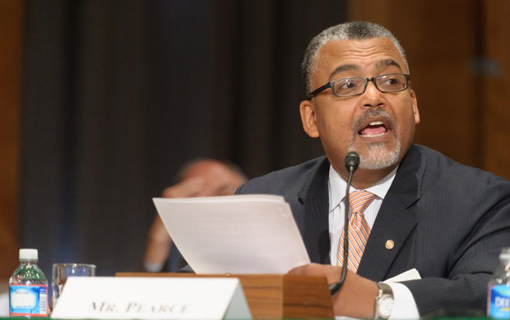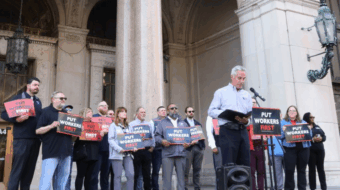
WASHINGTON – The National Labor Relations Board is tackling another big joint-employer issue: If an employer gets workers from a temp agency and the union wants to organize them, must it first get an OK from both the employer and the temp agency?
In 2000, the NLRB said “no.” In 2004, the GOP board majority reversed that and said “yes” on a 3-2 party-line vote. Now, in a July 6 call for briefs, the board is reopening the topic.
The issue is important to workers and unions nationwide. Temps are a large and growing share of the workforce, and a part of what might be called the “on-demand” workforce – temps, “independent contractors,” telecommuters, and similar workers – whom some economists predict could be half of the U.S. workforce within a few decades.
Temps are also routinely exploited, since labor laws don’t cover most of them. They are also difficult to organize, because of the nature of the work and because of the legal obstacle the NLRB, voting on partisan lines, erected. In the 2004 Oakwood Care Center case, it said both the employer and the temp agency must agree to the union’s organizing drive.
Now the board is using a case involving a 2012 organizing drive by Sheet Metal Workers Local 19 among workers in Pennsylvania projects of Miller & Anderson, a Virginia-based electrical contractor, to reopen the issue of who, if anyone, must agree to the drive.
The board’s regional director for Pennsylvania, citing Oakwood, turned down the local’s petition. The local’s attorney, Martin Milz of the Philadelphia firm of Spear, Wildman, appealed.
“It is impossible to deny that the requirement of consent from both employers effectively prevents the representation of temporary workers,” Milz wrote. “Temporary workers have become a very permanent segment of the American workforce.”
The National Labor Relations Act “does not exclude them from protection. Only the misguided rulings” of past NLRBs “deny them their Section 7 rights” to organize and bargain. Milz said. Now the full board is taking up the case.
The NLRB wants briefs on “how, if at all, have the Section 7 rights of employees in alternative work arrangements, including temporary employees, part-time employees and other contingent workers, been affected by” the 2004 Oakwood ruling requiring both employers’ OK.
“Should the board continue to adhere to the holding of Oakwood…which disallows inclusion of solely employed employees and jointly employed employees in the same unit absent the consent of the employers? And if the board decides not to adhere to Oakwood, should the board return to Sturgis” – the 2000 case – “which permits units including both solely employed employees and jointly employed employees without the consent of the employers?” it asks. Or, the NLRB wants to know, should it construct some alternative arrangement?
Photo: NLRB chairman Mark Gaston Pierce. | senate.gov










